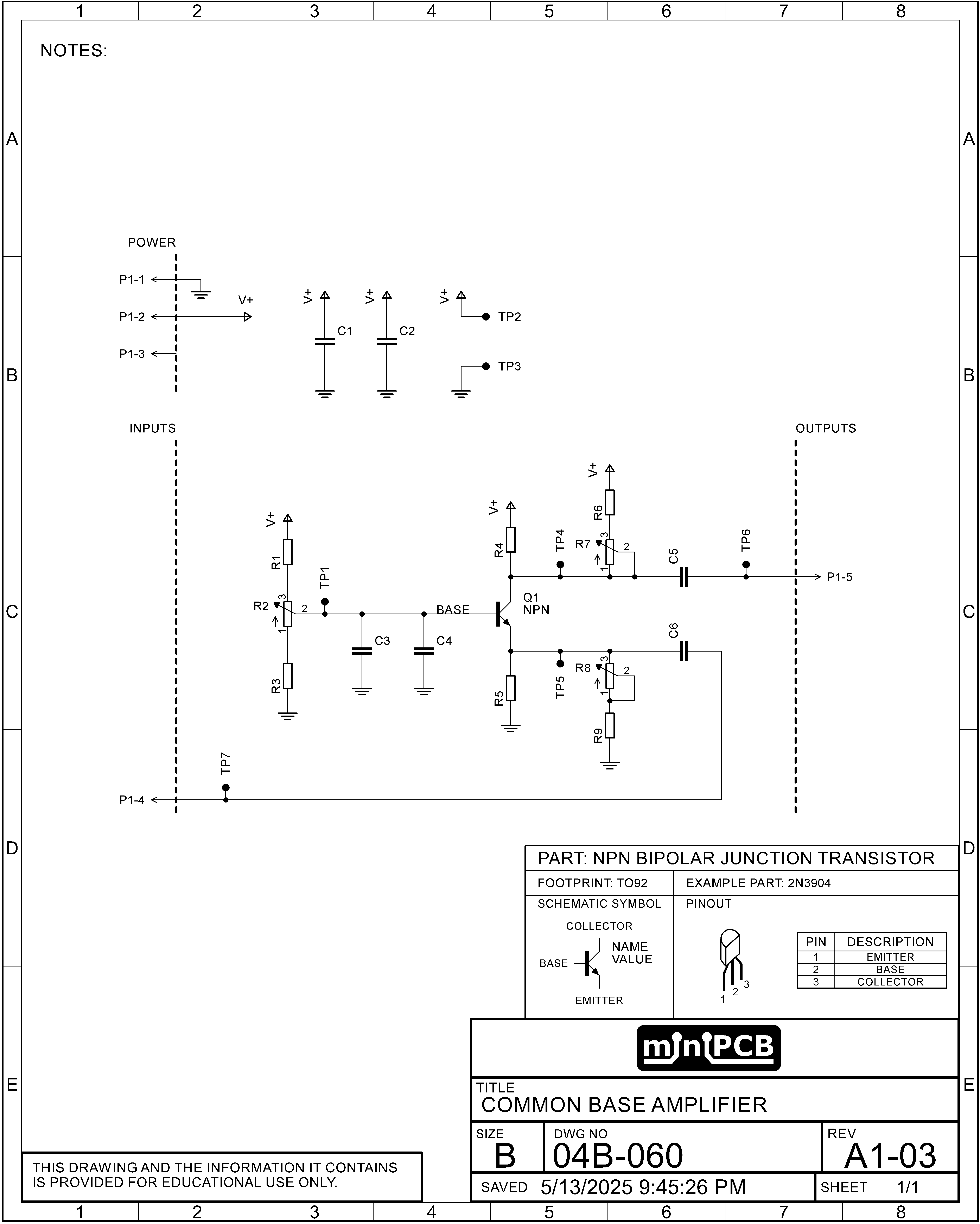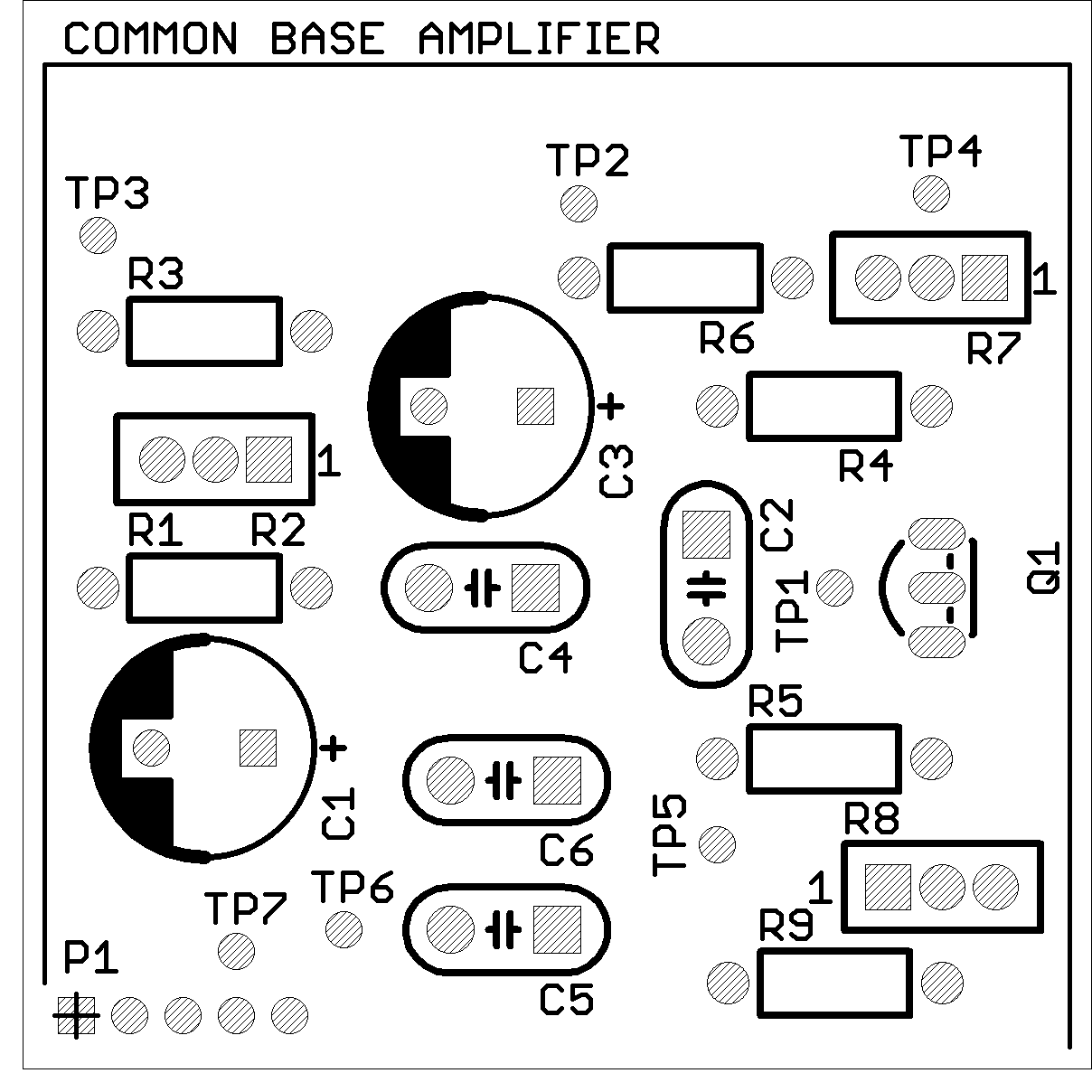Details
Part No: 04B-060
Title: Common Base Amplifier
Board Size: Approx. 50 x 50 mm
Pieces per Panel: 4
Panel Size: 100 x 100 mm (V-scored)
Description
AI Seed
AI Generated
Videos
Schematic

Layout

A foundational BJT amplifier for teaching gain, biasing, and small-signal response.
Part No: 04B-060
Title: Common Base Amplifier
Board Size: Approx. 50 x 50 mm
Pieces per Panel: 4
Panel Size: 100 x 100 mm (V-scored)

